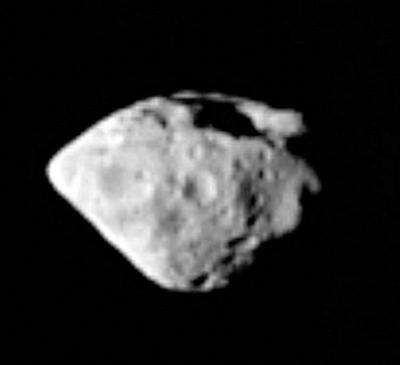A photo of the magnesium-silicate bearing asteroid Steins, as taken by the Rosetta spacecraft as it passed through the asteroid belt en route to a comet. Credit: Rosetta and ESA
Asteroids (or comets) whose orbits bring them close to the earth's orbit are called Near Earth Objects (NEOs). Some asteroids are old, dating from the origins of the solar system about four and one-half billion years ago, and expected to be rich in primitive materials. They are of great interest to scientists studying the young solar system. Other NEOs, although not as rich in primitive materials, are thought to contain minerals of potential economic value. NASA has been thinking about sending a manned mission to an NEO for research, and has been motivated as well by a national interest in their possible commercial value.
Picking an NEO for a potential landing site involves at least two basic considerations. The first is knowing whether the asteroid's composition is primitive, or otherwise. This can be determined by measuring the surface character via the sunlight reflected from the surface (primitive materials usually appear dark), and/or by spectroscopy that can ascertain the minerals more reliably.
The second consideration involves picking an NEO whose orbit allows it to be reached by a spacecraft with relative ease and energy efficiency, since some NEOs, even though passing closer to earth, are harder to reach.
CfA astronomers Joe Hora, Giovanni Fazio, Howard Smith, and Tim Spahr, together with a team of colleagues, have been using the infrared camera on the Spitzer Space Telescope and ground-based telescopes to determine the size and composition of 700 NEOs, more than ten times the number now so characterized. In a series of three new papers the team describes their thermal model and its successes in describing NEOs (the smallest one they have measured to date is only 84 +-14 meters in diameter); they model one NEO in detail, and characterize sixty-five other NEOs that are suitable for a manned mission because they are relatively easy to reach.
Seven of sixty-five appear to be very dark, and are probably primitive asteroids; the others have a range of compositions including silicate-rich minerals containing iron and magnesium. The new research extends our understanding of the nature of NEOs. Although planning for a manned mission to an asteroid is still in the early stages, the research also will help decision-makers choose a suitable destination.
Provided by Harvard-Smithsonian Center for Astrophysics






















